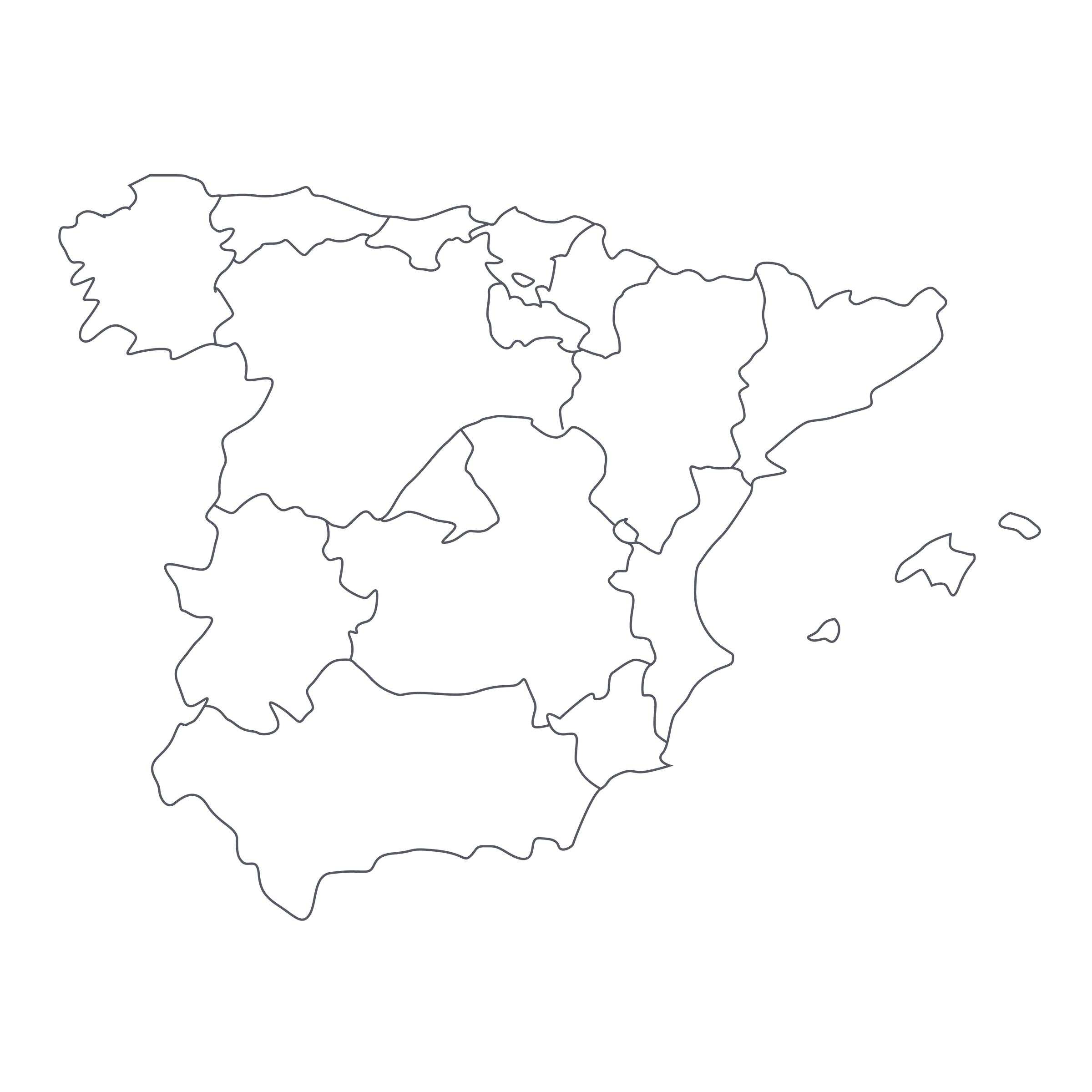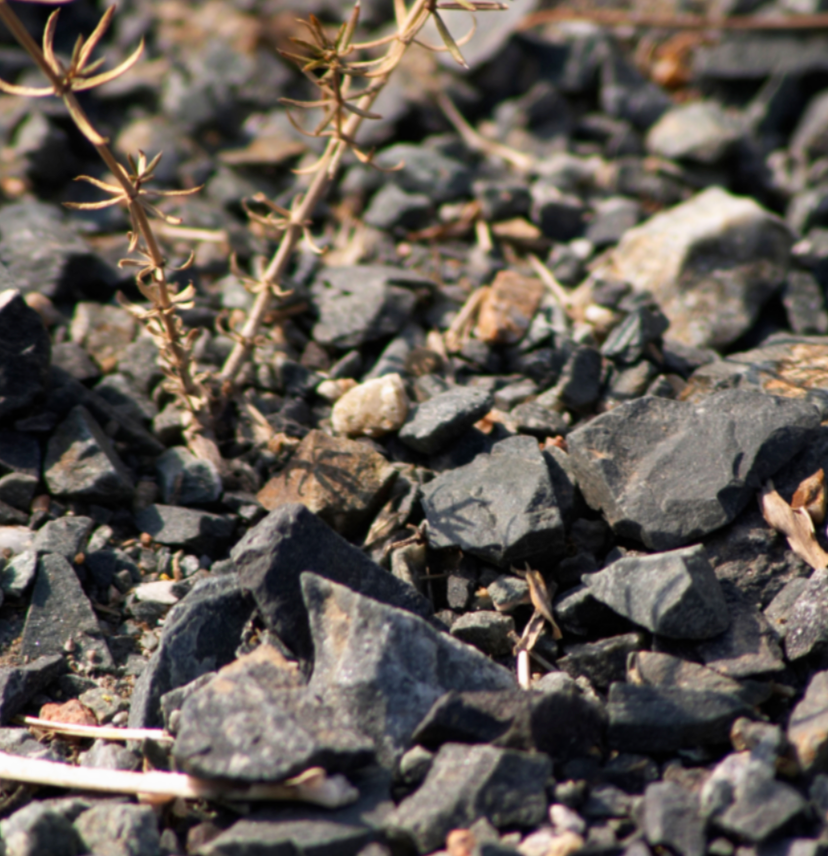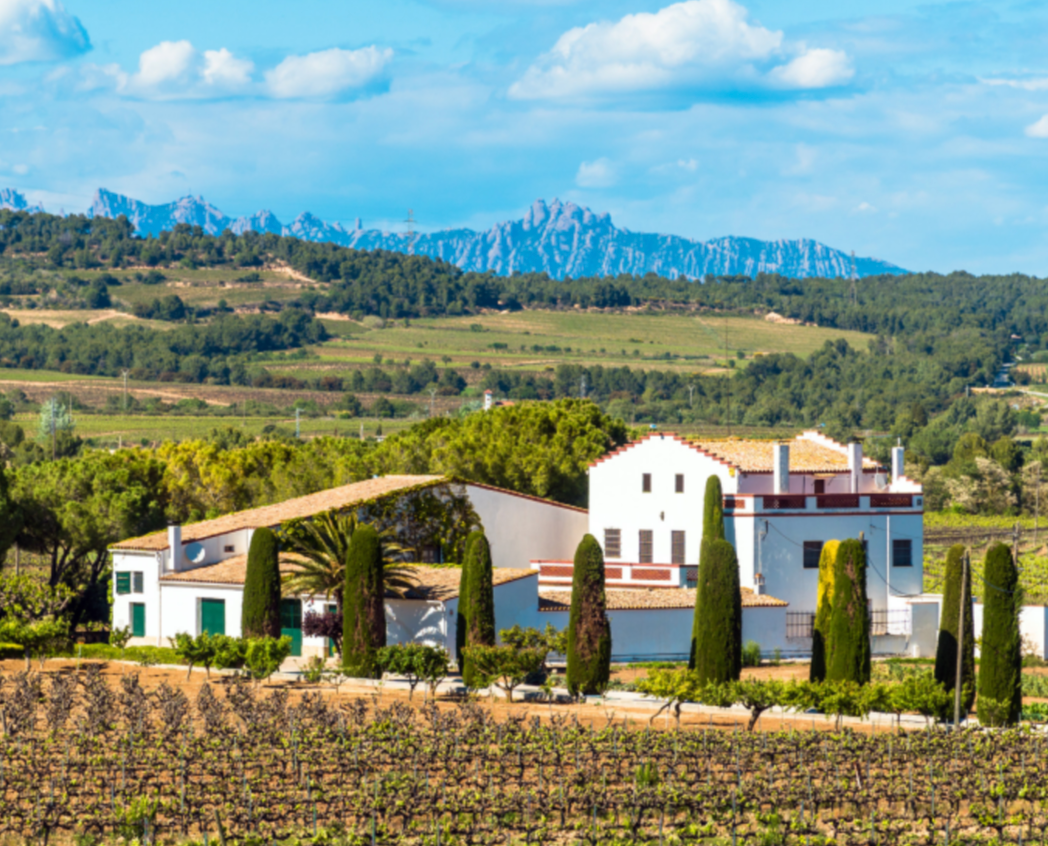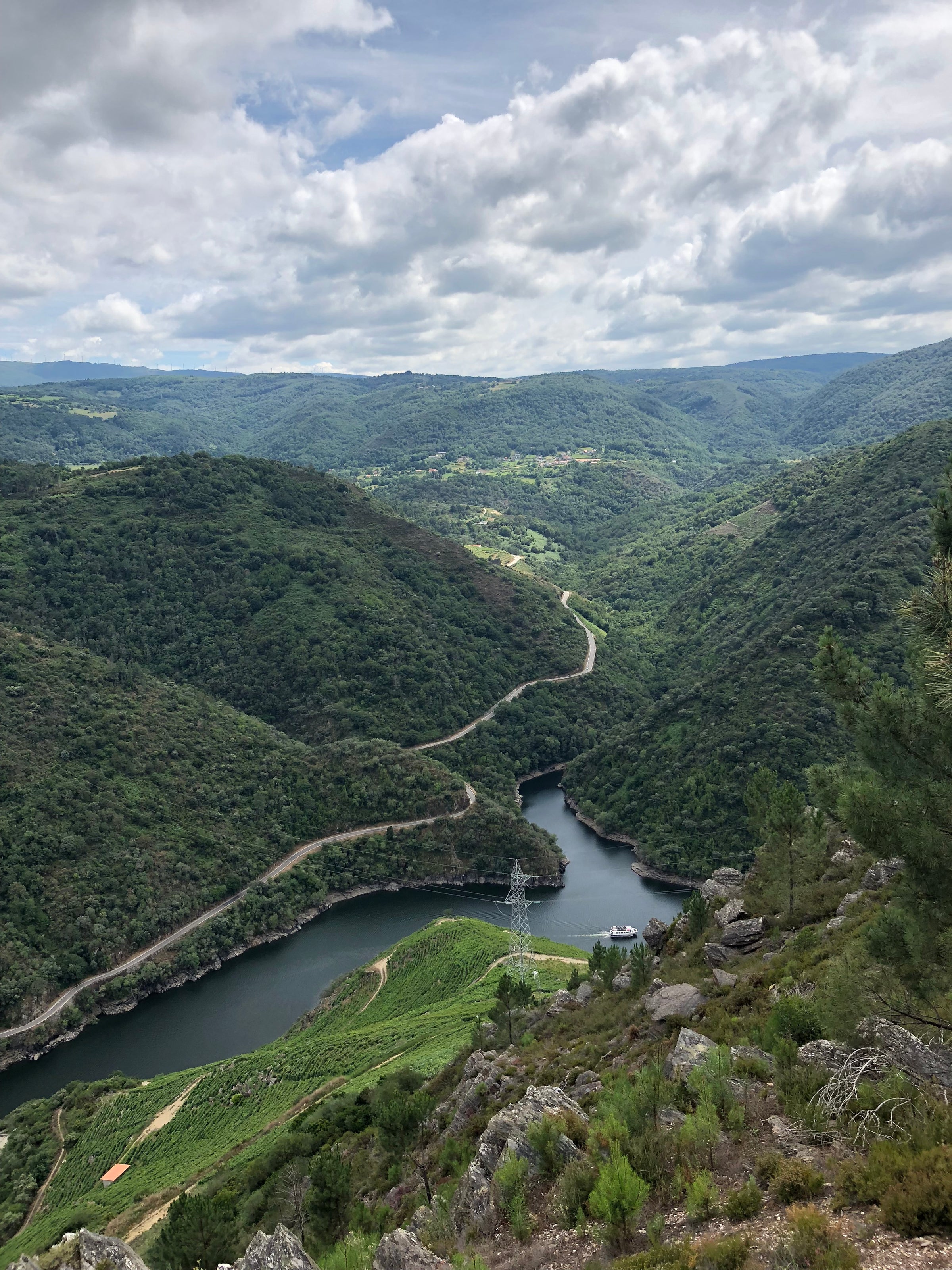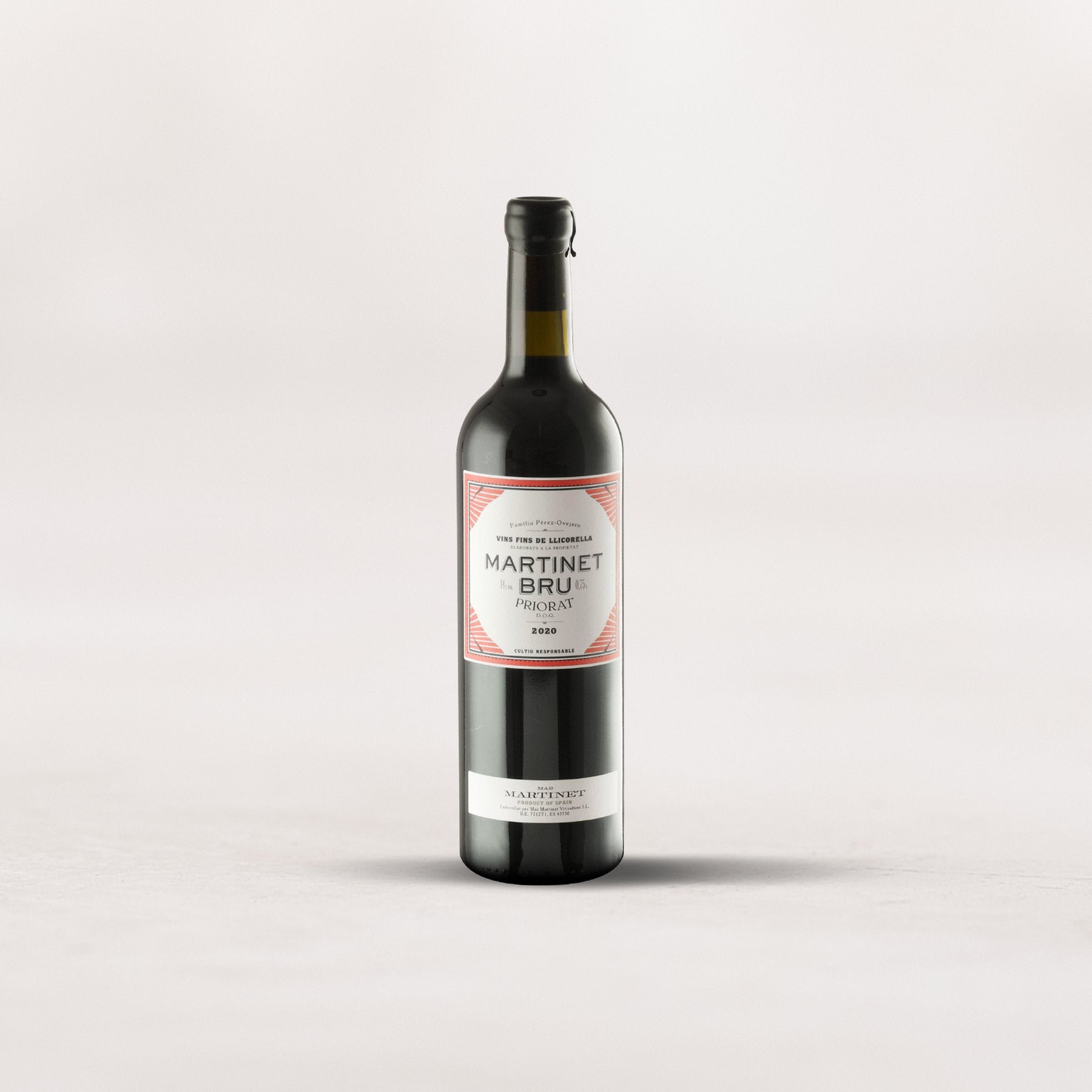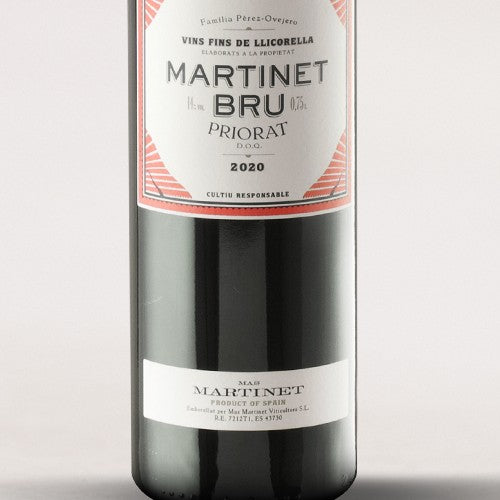It’s important to note at the outset that Mas Martinet isn’t some plucky upstart trying to get a foothold in the market by holding prices down. This is one of the blue-chip names in Spain’s culty Priorat region, founded by José Luiz Pérez during the much-hyped revival of the region in the 1980s. Mas Martinet is, by any measure, a Priorat “first growth,” and it has only become more compelling and influential under the leadership of his daughter, Sara Pérez.
The scores from critics have remained consistently high, as has the demand from collectors, but the style of the wines has subtly evolved. As Priorat re-emerged from obscurity in the late-1980s and early ’90s, it became known for luxurious, Bordeaux-inspired reds with an “international” sheen to them, yet while Sara continues to employ varieties such as Syrah, Cabernet, and Merlot, their presence has been reduced—as has the influence of oak. In her spectacular “Bru” bottling, we have perhaps the greatest pound-for-pound value in Priorat, as well as a wine that encapsulates the evolution of Priorat wine perfectly. In the winery, “whole-cluster” fermentations are employed, with less aggressive extraction for color and texture. New oak barriques have been traded for large-format, neutral casks as well as concrete vats and clay amphorae. This latest iteration of Bru is an example of power and elegance coexisting, and it remains a stellar value.
José Luiz Pérez was one of those early adventurers, along with René Barbier, who began re-colonizing Priorat in the 1980s. He established Mas Martinet in 1989. Since 2001, Sara Pérez has managed all activity and guided the estate to fully organic viticulture. Martinet Bru is mainly sourced from a single vineyard called Mas Seró. Located within the “Vi de Vila” zone (the new classification for specific village sites) of Masos de Falset, it’s a cooler, coastal-facing site deeply rooted in llicorella (fractured, dark, slate-based soil). The midday sun reflecting off this quartzite-flecked soil is cooled by a strong sea-breeze influence, locally called garbinada. The specific terroir of Mas Seró affords the grapes a longer, evenly balanced growing season resulting in aromatic lift, complex flavor, and structural nuance.
.
All the fruit for Martinet “Bru” was hand-harvested and most of the clusters were destemmed, with 20% of the clusters left whole through fermentation. The blend in 2020 was dominated by Grenache (55%) with a supporting cast of Carignan, Syrah, Cabernet, and Merlot. Pérez co-ferments some of the grapes depending on the balance of sugar and acidity in the different varieties. Fermentation takes place in a combination of concrete and wooden vats to ensure optimal oxygenation, and all work requires gentle handling to preserve pristine fruit flavor and freshness. After finishing alcoholic fermentation, the must is pressed and left to rest in a combination of 4,000-liter oak tanks and an assortment of smaller barrels, after which it spends roughly five months in concrete before bottling.
“Bru” exhibits the kind of energy and purity that comes from steadfast biodynamic farming. It’s a long way from the inky, chunky, somewhat flabby examples typically found at this price point. In the glass, it shines a dark garnet red with ruby reflections toward the rim. The alluring perfume is reminiscent of great Châteauneuf-du-Pape, with a mixture of black raspberry, wild cherry, and mulberry underneath dancing scents of licorice, dried herbs, spicy florals, orange peel, white pepper, and dusty slate. It is full-bodied, with finely tuned tannins wrapped around tart boysenberry and violets—a soaring, smoky mineral cord running throughout. It is luxurious yet vivid, seamlessly gliding from plush to firm and back! It deserves a full 60-minute decant, after which I’d suggest serving at a cool 60 degrees in Burgundy stems. One of the world’s most “extreme” terroirs does not disappoint! Cheers!
